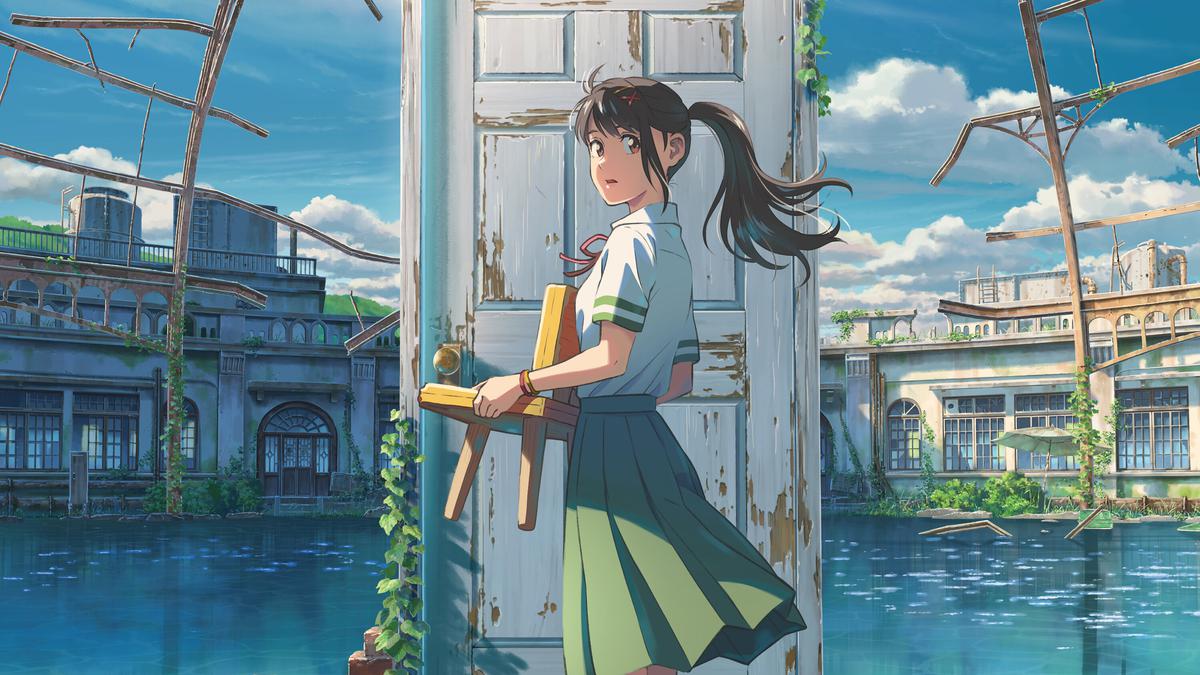
‘Suzume’ movie review: Makoto Shinkai explores love and loss in breathless road trip anime
The Hindu
While not matching the raw beauty of ‘The Garden of Words’ or the dramatic beats of ‘Your Name,’ the themes of ‘Suzume’s coming-of-age journey make it a worthy successor to the director’s previous blockbusters
Mid-way through Makoto Shinkai’s latest, you realise what separates this from his previous works like Your Name and Weathering With You. For over decades now, Shinkai’s vision (a modern-day legend himself) has been compared to the greatest there ever was: Hayao Miyazaki. Now, with Suzume, he decides to go full throttle with references and tributes to Studio Ghibli’s legacy that is sure to set Miyazaki fans into raptures of delight.
However, Suzume is still very much a Shinaki film set in the recent mould of what we are accustomed to from the Japanese animator; if Weathering... dealt with a world affected by climate change, here, he references the 2011 Tōhoku earthquake and tsunami that caused a catastrophe all over the country.
The premise is as ingenious as always; Suzume Iwato is a 17-year-old orphaned school girl who lives with her aunt after her mother, a nurse, was killed in the tsunami. A chance encounter with a mysterious, handsome stranger leads her to (accidentally) open a portal to an alternate dimension only she can see, but cannot enter. It’s revealed that Suzume, unknowingly, has set into effect a calamitous chain of events that involves a talking cat called Daijin who is opening similar doors across Japan... so that a giant worm can enter the real world to cause cataclysmic earthquakes.
That’s not all; the only person who can help Suzume reverse this drama — the stranger is revealed to be a “Closer” named Sōta Munakata (he basically chases these portals down and closes them) — has been inexplicably transformed into a three-legged chair (!) by the seemingly-wicked Daijin.
So just like Mitsuha in Your Name and Hina in Weathering with You, we have a young heroine fighting her inner turmoil, suddenly thrust into a fantasy adventure, with the fate of the world hanging in the balance. So Suzume and Sōta (still bemoaning his chair avatar) set off on a whirlwind trip all over Japan — in cars, trains and ships — trying to stop Daijin from wreaking havoc and closing the doors before natural disasters ensue.
It makes for absolutely heady viewing. The world-building backdrop is littered with dazzling sequences of sunlight, clouds and rain droplets that Shinaki and his team are so renowned for, and his mastery over light and shadows remains as spell-binding as ever.
The narrative is interspersed with everyday people, buildings, greenery and even landmarks like Mount Fuji, even as we are introduced to an eclectic bunch of supporting characters who make this journey all the more colourful: Suzume’s aunt Tamaki, Tamaki’s co-worker Minoru who has a crush on her, Sōta’s friend Tomoya and his red convertible, as well as local bar owner Rumi, her twins and the establishment’s jolly patrons.













